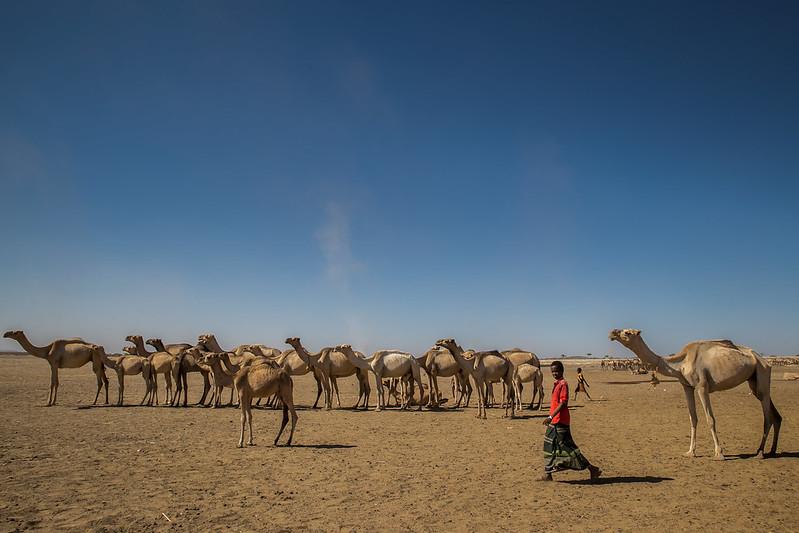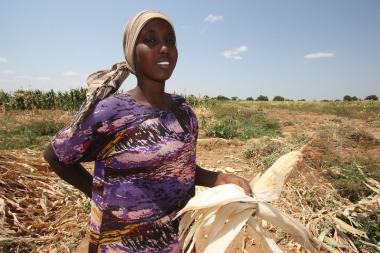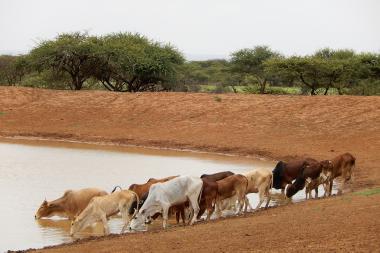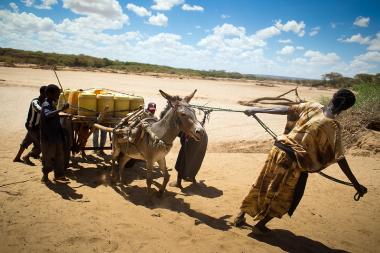Journal article
A review of approaches to the integration of humanitarian and development aid: the case of drought management in the Horn of Africa
This study reviews approaches to the integration of humanitarian and development aid directed at drought management in the Horn of Africa
Publisher Frontiers Pastoralism: Research, Policy and Practice

Herder with camels in Danaan - Shinile, Somali regional state, Ethiopia
Credit Image by Mulugeta Ayene / UNICEF Ethiopia - CC BY-NC-ND 2.0
Whether and how to link humanitarian assistance and long-term development aid are questions that have polarised debates in policy, practical, and theoretical spaces in recent years. This is due to the diversity of actors, institutional mandates, funding sources, programmes and operational dynamics that exist between the two domains.
In pastoral areas of the Horn of Africa, which experience recurrent drought emergencies, integrating the two forms of assistance has been attempted in several instances. These attempts have often been disjointed and have sought to grapple with an unpredictable terrain of shifting policies and programme designs. These challenges have been further compounded by a substantial disconnect between programming (across humanitarian aid and resilience building) and existing pastoralist practices and strategies comprising local social safety nets.
Using a comprehensive literature review, this paper explores some of the practical strategies that have been implemented to integrate these two forms of assistance in recent years. It surveys implications that arise in relation to the question of how best to address persistent drought in the Horn of Africa. Interrogating mechanisms for enhancing aid efficiency and effectiveness including crisis modifiers and contingency planning, the study examines what progress has been made in transitioning from reactive, short-term emergency response to long-term development and what barriers still exist. It also considers Community Managed Disaster Risk Reduction (CMDRR), seen by many as a bridge for enhancing local ownership and thus sustainability of both kinds of intervention.
This paper argues that despite multiple policy shifts and the adoption of new frameworks (including, recently, the Intergovernmental Authority on Development’s Drought Disaster Resilience and Sustainability Initiative - IDDRSI), when it comes to practical implementation, there has been little progress. We suggest that this partly due to the well documented complexity of the aid system, and the forms of bureaucracy and upward accountability that make change extremely difficult, and in part due to a lack of meaningful community participation in planning and practice.
Citation: Mohamed, T. S., Crane, T. A., Derbyshire S. and Roba, G. (2025) A review of approaches to the integration of humanitarian and development aid: the case of drought management in the Horn of Africa. Frontiers Pastoralism: Research, Policy and Practice Volume 15 - 2025. https://doi.org/10.3389/past.2025.14001


